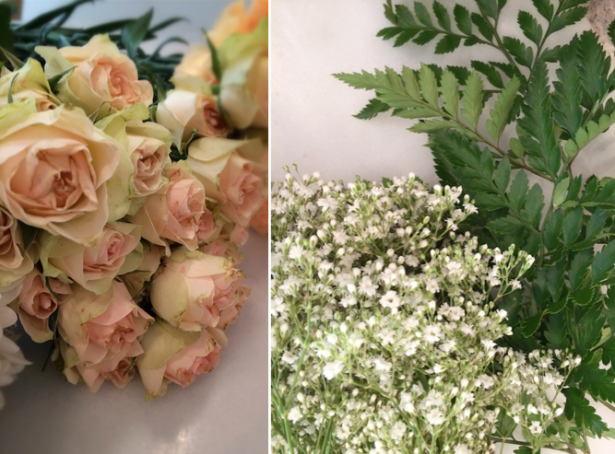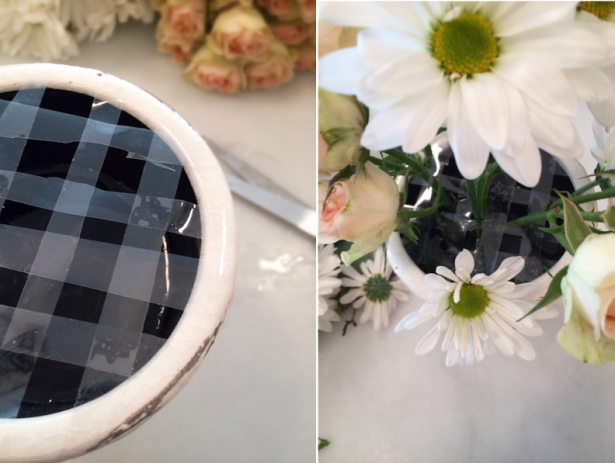After attending the bridal expo a couple weekends ago, I realized creating a cohesive bouquet required much more effort than sticking flowers in a vase. In a effort to make my sister’s wedding as homemade and DIY as possible, I started doing some research on bouquet making. I focused on making four different types of presentations: a single bud vase, a tall narrow vase, a long, rectangular centerpiece, and a potted grouping. After extensive reading and trial and error practice, here’s some tips and tricks of what I found helpful when putting together a flower arrangement.
 For creating a single bud vase, one of the most important concepts is to play with proportions. Choose larger flowers for smaller vases, or for tall skinny vases, choose wide, flat flowers. It gives it a more imperfect, random look. Some good flowers to use are carnations, gerbera daisies, single roses, or peonies. These add pops of color when placed in a room as a single vase, or can make a statement centerpiece when grouped in sets on a table.
For creating a single bud vase, one of the most important concepts is to play with proportions. Choose larger flowers for smaller vases, or for tall skinny vases, choose wide, flat flowers. It gives it a more imperfect, random look. Some good flowers to use are carnations, gerbera daisies, single roses, or peonies. These add pops of color when placed in a room as a single vase, or can make a statement centerpiece when grouped in sets on a table.
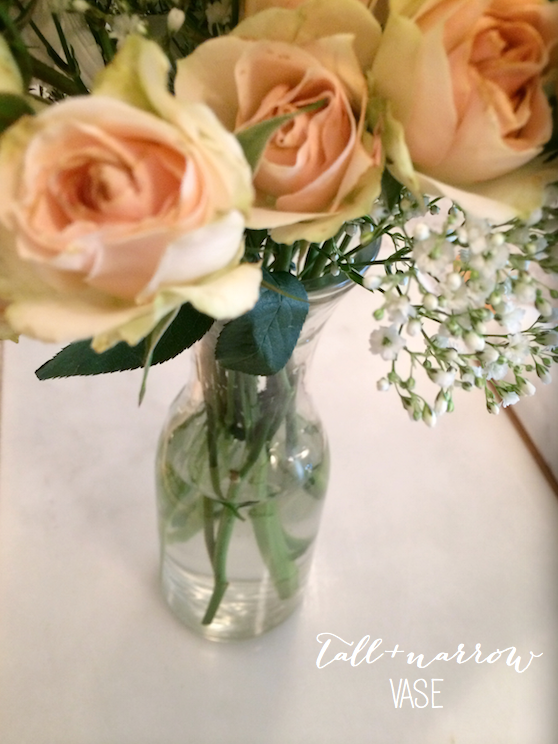 Tall and narrow vases are one of the best for beginners. The smaller the neck of the vase, the easier creating an arrangement will be (as it does the work for you, holding up the flowers, and allowing them to drop ever so slightly to the side). Start with your main “showcase” flower, and cut to size. Avoid having it be the tallest flower, or letting them group together in the center. This will give a more varied, natural look in the end. Fill in with greenery and less expensive filler flowers. This can help cut down on costs. As a good rule of thumb: stop filling the vase just before you think you are done. That way, it will prevent you from over-crowding and over-doing the arrangement. Less is more.
Tall and narrow vases are one of the best for beginners. The smaller the neck of the vase, the easier creating an arrangement will be (as it does the work for you, holding up the flowers, and allowing them to drop ever so slightly to the side). Start with your main “showcase” flower, and cut to size. Avoid having it be the tallest flower, or letting them group together in the center. This will give a more varied, natural look in the end. Fill in with greenery and less expensive filler flowers. This can help cut down on costs. As a good rule of thumb: stop filling the vase just before you think you are done. That way, it will prevent you from over-crowding and over-doing the arrangement. Less is more.
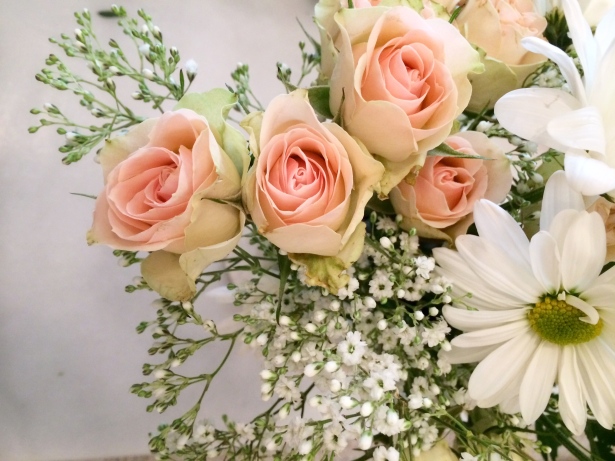

 A long, rectangular vase is a nice alternative to use on a table setting. It allows for easy conversation, as it doesn’t block your view of someone across the table. The trick here is to use flowers that are nice and full, which will provide enough volume to completely cover the open surface of the vase. Cut the stems long enough to stick into the vase at a slight angle, and allow the flower bud to rest just above the rim of the vase. A flower frog is helpful for arrangements like this to keep the stems in place.
A long, rectangular vase is a nice alternative to use on a table setting. It allows for easy conversation, as it doesn’t block your view of someone across the table. The trick here is to use flowers that are nice and full, which will provide enough volume to completely cover the open surface of the vase. Cut the stems long enough to stick into the vase at a slight angle, and allow the flower bud to rest just above the rim of the vase. A flower frog is helpful for arrangements like this to keep the stems in place.


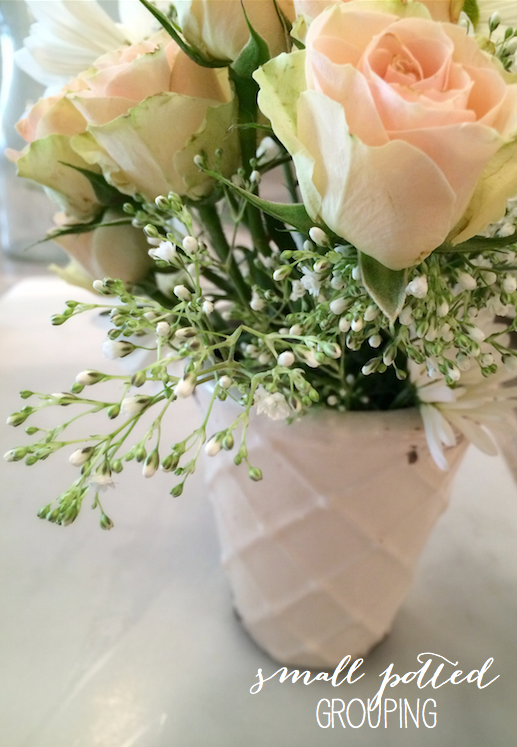 The final arrangement I made is a small potted grouping. The trick here is to create a grid-like pattern on the top of the pot to hold the flowers in place. Do so by placing floral tape (or clear tape cut in half – just avoid it getting wet) as seen below. Place the flowers into the slots one by one, starting with your more dominent flowers and then filling in with greenery. The technique here is similar to that of the tall narrow vase, aiming for a random assortment look rather than a perfectly-planned symmetrical arrangement.
The final arrangement I made is a small potted grouping. The trick here is to create a grid-like pattern on the top of the pot to hold the flowers in place. Do so by placing floral tape (or clear tape cut in half – just avoid it getting wet) as seen below. Place the flowers into the slots one by one, starting with your more dominent flowers and then filling in with greenery. The technique here is similar to that of the tall narrow vase, aiming for a random assortment look rather than a perfectly-planned symmetrical arrangement.

